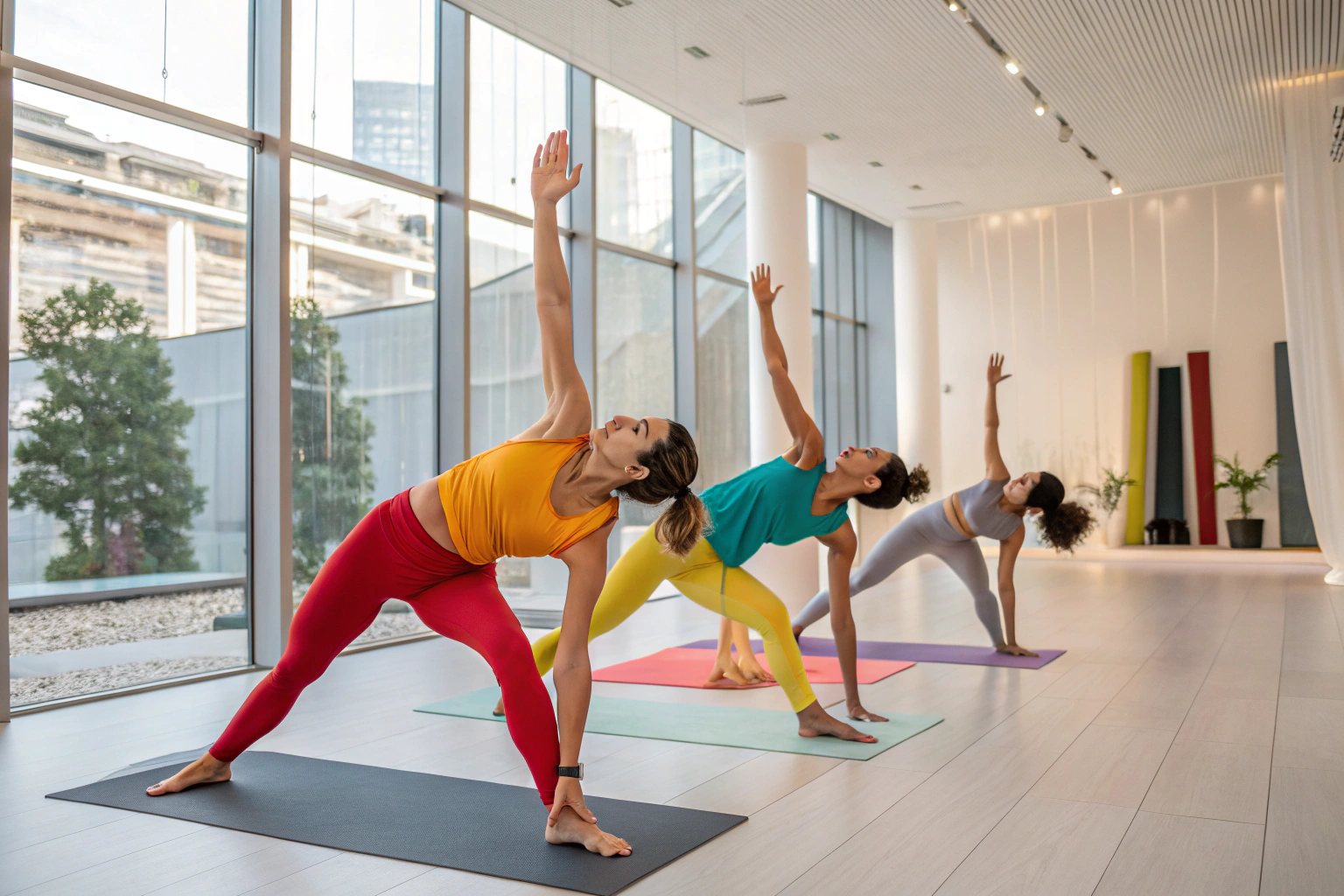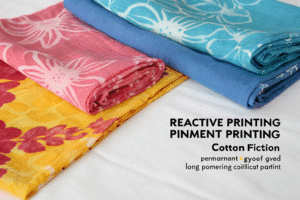Yoga activewear has become a staple in many wardrobes. Whether it’s for the flexibility of vinyasa or the intense stretches of hot yoga, the right fabric can make all the difference in comfort, performance, and durability. But with so many options available, how do you choose the best fabric for yoga clothes?
The ideal fabric for yoga activewear needs to be moisture-wicking, stretchy, breathable, and soft against the skin. Fabrics like spandex, nylon blends, and organic cotton are top choices. This article delves into the best fabric options for yoga activewear, and how different textiles contribute to your workout performance and comfort.
When considering fabric choices for yoga apparel, you must think about both performance and comfort. It’s essential to select fabrics that will allow for unrestricted movement while also supporting the body through different yoga poses. Below, we will explore the key features to look for in yoga fabrics and review the most popular materials used in yoga gear.
What Characteristics Should Yoga Activewear Fabric Have?
Activewear for yoga should have specific qualities to ensure comfort during exercise. The fabric should be able to move with your body, keep you cool, and withstand repeated stretching and washing.
Stretchability, moisture-wicking properties, and breathability are the three main characteristics to look for in fabric for yoga clothes.
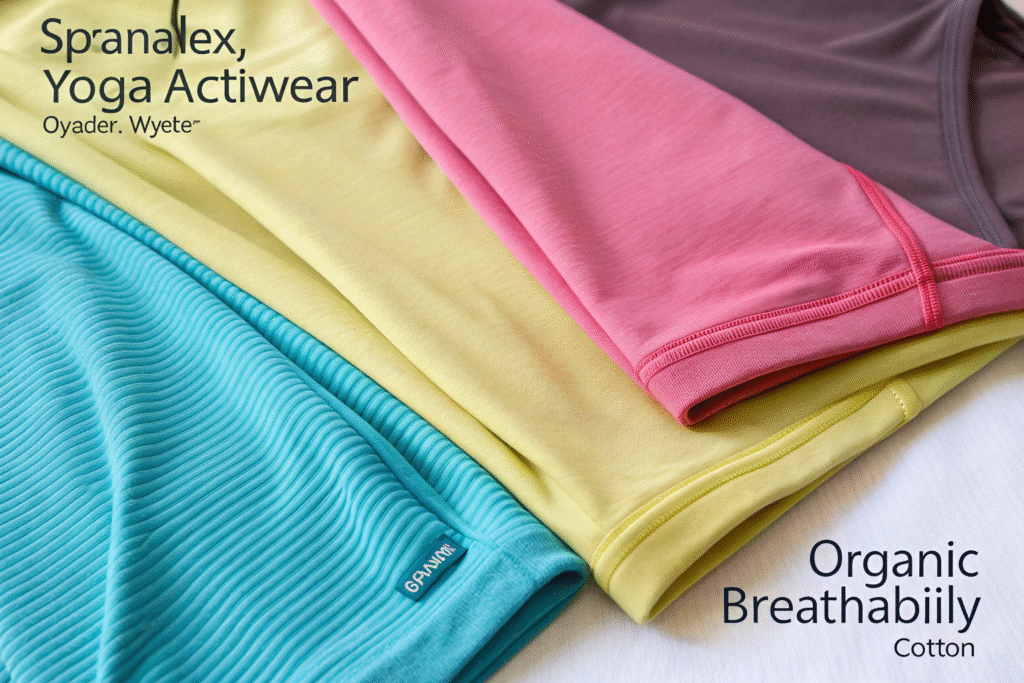
Why Is Stretchability Crucial for Yoga Clothes?
Stretchability allows the fabric to move with the body, enabling flexibility during yoga poses. Fabrics with 4-way stretch, like spandex, ensure that activewear doesn’t restrict movement. Yoga poses often require deep stretches and flexibility, which makes high-stretch fabrics essential for comfort and performance.
How Does Moisture-Wicking Fabric Help During Yoga?
Moisture-wicking fabrics pull sweat away from the skin, keeping the body dry during intense workouts. Without moisture-wicking properties, sweat can accumulate on the skin, causing discomfort and irritation. Fabrics like nylon and polyester are commonly used for their moisture-wicking abilities and quick-drying features.
Which Fabrics are Best for Yoga Activewear?
The best fabrics for yoga activewear are those that provide comfort, durability, and support throughout a workout. Depending on the intensity and type of yoga practice, some fabrics perform better than others.
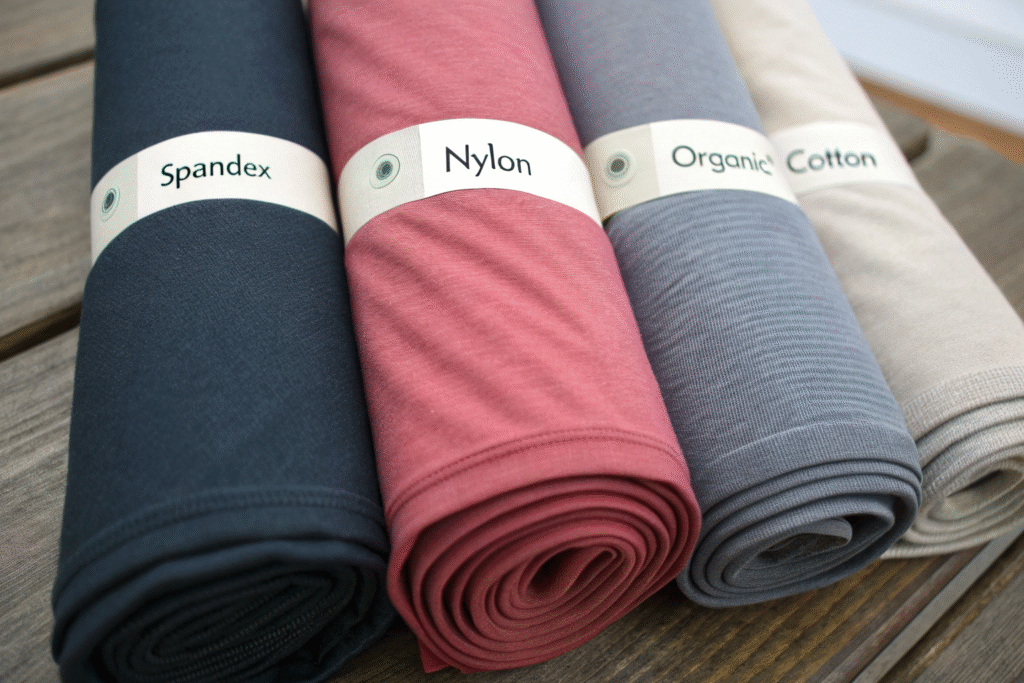
Why Is Spandex (Lycra) Popular for Yoga Wear?
Spandex, also known as Lycra or elastane, is one of the most popular fabrics for yoga activewear. It offers incredible stretchability, usually combined with a small amount of polyester or nylon for durability. Spandex can stretch up to five times its original size, which makes it perfect for deep stretches and a full range of motion. According to Textile World, spandex blends maintain their shape even after extended use.
How Does Nylon Blend Improve Performance?
Nylon is another fabric often used in activewear due to its strength, smooth texture, and moisture-wicking properties. When blended with spandex, nylon increases the fabric’s durability and elasticity, making it ideal for activewear. Nylon is also breathable, which ensures the fabric remains lightweight and comfortable during workouts. Fabrics like nylon/spandex blends can support intense yoga sessions without sagging or losing shape.
How Does Breathability Affect Comfort During Yoga?
Breathability refers to the fabric's ability to allow air to flow through and evaporate moisture. During yoga, your body temperature rises, and breathable fabrics help keep you cool and comfortable by letting air circulate and sweat evaporate quickly.
Breathable fabrics prevent overheating and keep your body comfortable during prolonged yoga sessions.
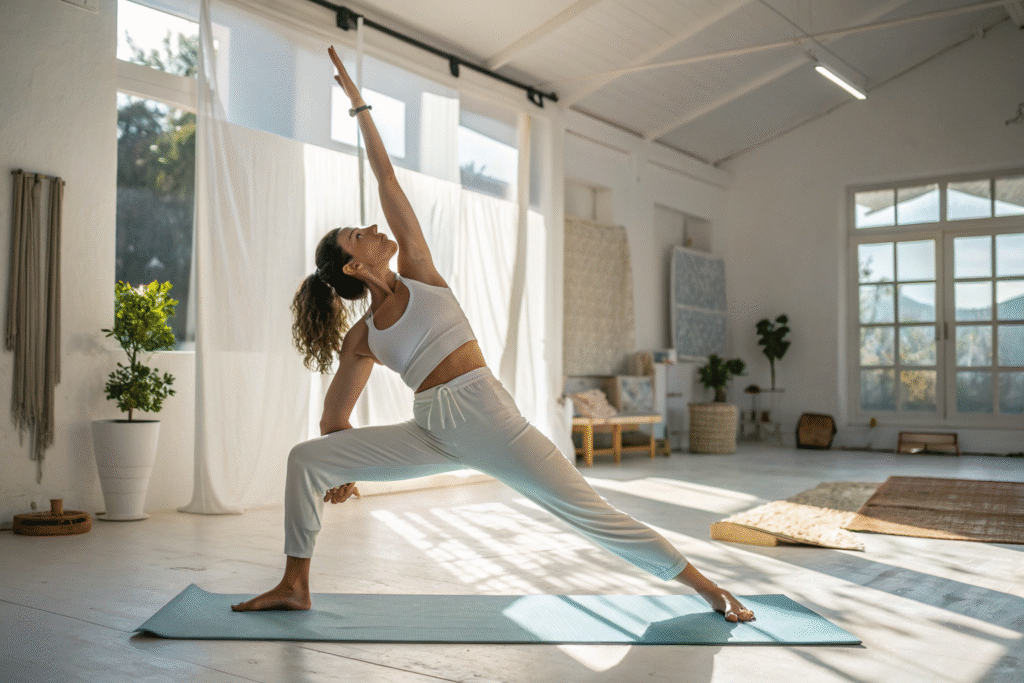
Why Is Organic Cotton a Good Option for Yoga Wear?
Organic cotton is a soft, breathable fabric that is gentle on the skin. It is often blended with other materials to enhance stretch and durability. Organic cotton offers excellent breathability, making it ideal for gentle yoga styles like hatha or restorative yoga. Unlike synthetic fabrics, organic cotton is made without harmful pesticides and chemicals, which makes it an excellent choice for environmentally conscious consumers. According to GOTS, organic cotton is grown with minimal environmental impact.
How Does Bamboo Fabric Compare in Breathability?
Bamboo fabric is another sustainable choice that offers great breathability. It is naturally moisture-wicking and has antibacterial properties, which helps keep you fresh during a yoga session. Bamboo fabrics are also incredibly soft and comfortable against the skin, making them suitable for yoga wear. Bamboo fabric is becoming increasingly popular in activewear for its sustainable benefits and comfort.
How Does Durability Factor into Yoga Activewear?
Durability is key in activewear, as yoga clothing is put through rigorous stretching, bending, and washing. A good yoga fabric should withstand frequent use without losing its stretch, shape, or color.
The right combination of stretch, moisture-wicking, and durability guarantees that your yoga wear lasts longer and retains its shape over time.
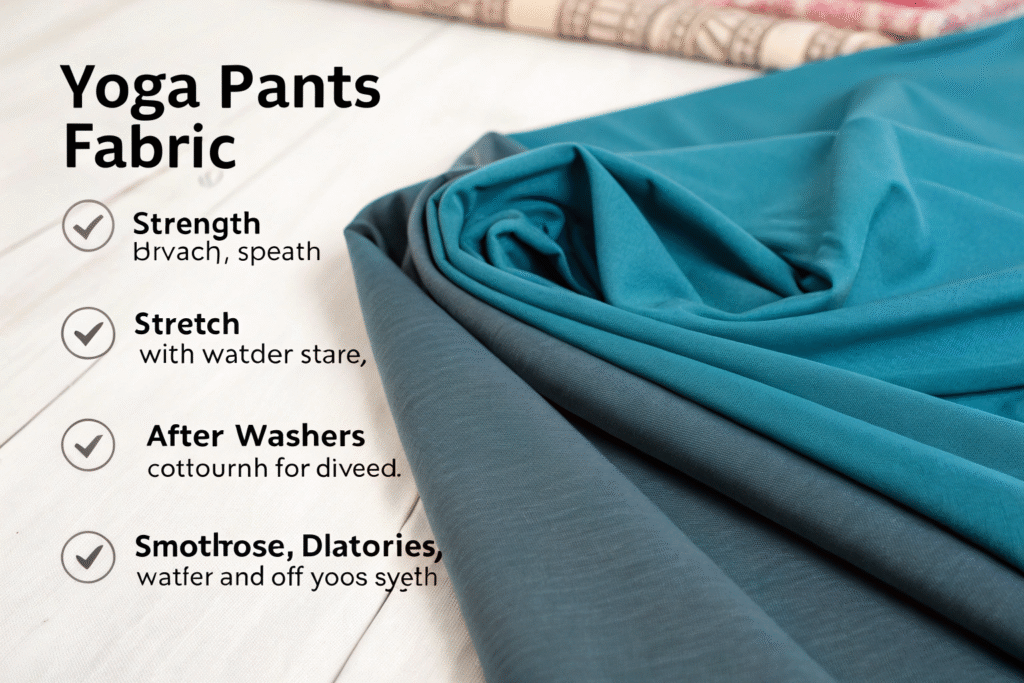
How Does Polyester Help with Durability?
Polyester is one of the most durable synthetic fabrics and is frequently used in yoga activewear. It holds its shape well, resists fading, and dries quickly. Polyester’s durability makes it suitable for those who engage in high-intensity yoga sessions. Blended with spandex or Lycra, polyester adds strength and longevity to yoga pants, leggings, and tops. For example, high-performance activewear brands often use polyester blends for their resilience and consistent performance. According to Fibre2Fashion, polyester also helps the fabric retain its color after multiple washes.
Why Is Nylon a Strong Fabric for Yoga Gear?
Nylon’s strength is another reason it’s favored for yoga wear. Nylon-based fabrics resist abrasion, maintain their elasticity, and are less likely to snag or tear compared to cotton or rayon. Nylon blends are frequently used for leggings and tops because they maintain shape and stretch even after regular use.
How to Choose the Best Fabric for Different Types of Yoga?
Not all yoga styles are the same, and your fabric choice should align with the type of practice you’re doing.
Choosing the right fabric for the right type of yoga maximizes performance and comfort during your workout.
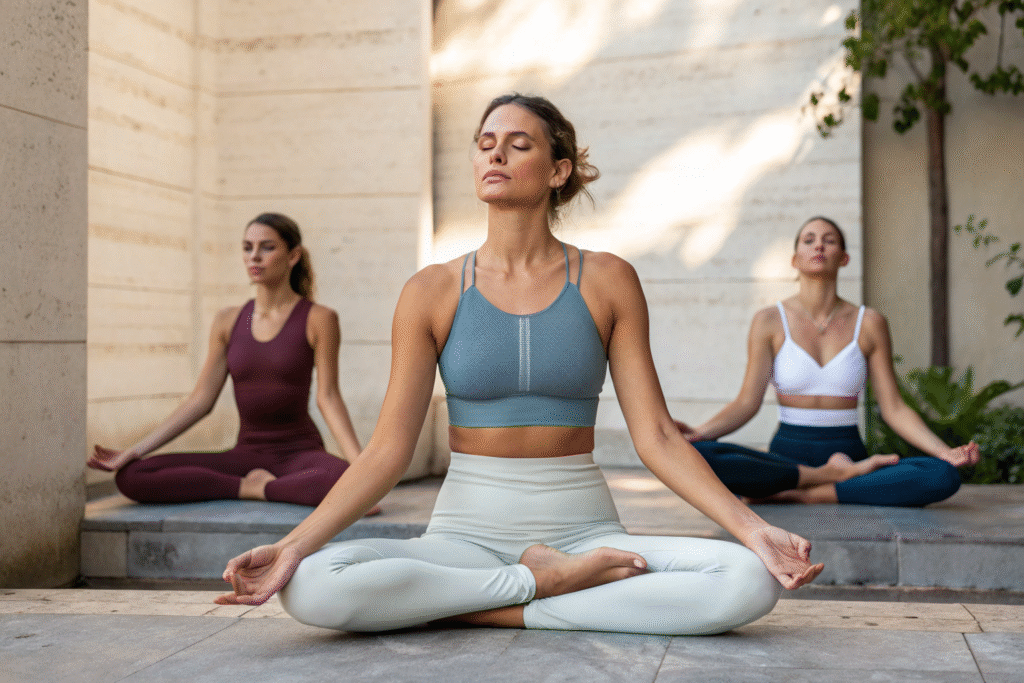
What Fabric Is Best for Hot Yoga?
For hot yoga, where the temperature is elevated, moisture-wicking fabrics like polyester/spandex blends and nylon are essential. These fabrics help keep sweat off the skin, keeping you cool even during intense poses. The moisture-wicking property of these fabrics also ensures that clothes dry quickly, preventing any discomfort. Fabrics that wick away moisture like these are also great for reducing the risk of skin irritations caused by excess sweat.
What Fabric Works Well for Restorative Yoga?
For gentler forms of yoga, like restorative yoga or yin yoga, comfort and breathability are key. Organic cotton and bamboo fabrics offer softness and breathability, ideal for poses that involve holding stretches for extended periods. These fabrics are naturally breathable, allowing air to circulate and prevent overheating, while maintaining a relaxed feel throughout the session.
Conclusion
Choosing the right fabric for yoga activewear is essential for comfort, performance, and durability. Fabrics like spandex, polyester, and nylon blends provide the stretch, breathability, and moisture-wicking properties needed for an effective yoga practice. Organic cotton and bamboo offer eco-friendly and breathable alternatives for gentler yoga styles.
For US and EU buyers looking to source high-quality yoga activewear fabrics, it’s crucial to choose a fabric that supports both performance and sustainability. At Shanghai Fumao, we specialize in providing a range of fabrics suitable for all types of yoga, ensuring comfort and durability in every pose. Contact our Business Director Elaine at elaine@fumaoclothing.com to discuss sourcing the best fabrics for your yoga apparel line.

